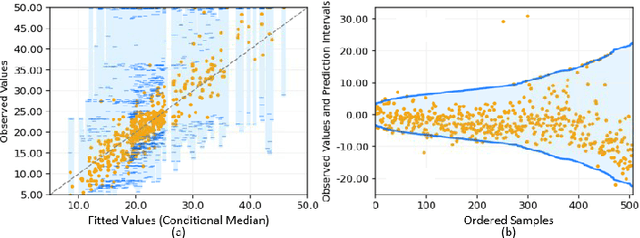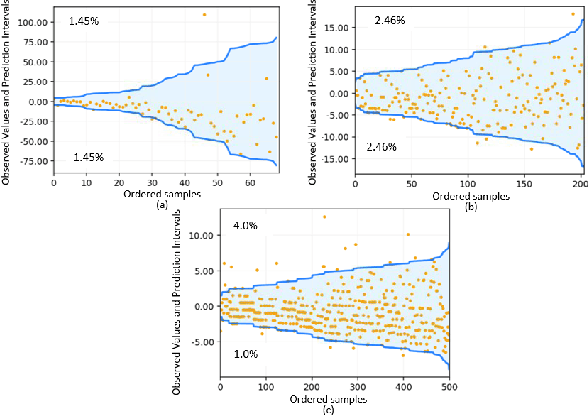Snigdha Bhagat
Quantile Regression using Random Forest Proximities
Aug 05, 2024



Abstract:Due to the dynamic nature of financial markets, maintaining models that produce precise predictions over time is difficult. Often the goal isn't just point prediction but determining uncertainty. Quantifying uncertainty, especially the aleatoric uncertainty due to the unpredictable nature of market drivers, helps investors understand varying risk levels. Recently, quantile regression forests (QRF) have emerged as a promising solution: Unlike most basic quantile regression methods that need separate models for each quantile, quantile regression forests estimate the entire conditional distribution of the target variable with a single model, while retaining all the salient features of a typical random forest. We introduce a novel approach to compute quantile regressions from random forests that leverages the proximity (i.e., distance metric) learned by the model and infers the conditional distribution of the target variable. We evaluate the proposed methodology using publicly available datasets and then apply it towards the problem of forecasting the average daily volume of corporate bonds. We show that using quantile regression using Random Forest proximities demonstrates superior performance in approximating conditional target distributions and prediction intervals to the original version of QRF. We also demonstrate that the proposed framework is significantly more computationally efficient than traditional approaches to quantile regressions.
Image fusion using symmetric skip autoencodervia an Adversarial Regulariser
Jun 04, 2020



Abstract:It is a challenging task to extract the best of both worlds by combining the spatial characteristics of a visible image and the spectral content of an infrared image. In this work, we propose a spatially constrained adversarial autoencoder that extracts deep features from the infrared and visible images to obtain a more exhaustive and global representation. In this paper, we propose a residual autoencoder architecture, regularised by a residual adversarial network, to generate a more realistic fused image. The residual module serves as primary building for the encoder, decoder and adversarial network, as an add on the symmetric skip connections perform the functionality of embedding the spatial characteristics directly from the initial layers of encoder structure to the decoder part of the network. The spectral information in the infrared image is incorporated by adding the feature maps over several layers in the encoder part of the fusion structure, which makes inference on both the visual and infrared images separately. In order to efficiently optimize the parameters of the network, we propose an adversarial regulariser network which would perform supervised learning on the fused image and the original visual image.
 Add to Chrome
Add to Chrome Add to Firefox
Add to Firefox Add to Edge
Add to Edge